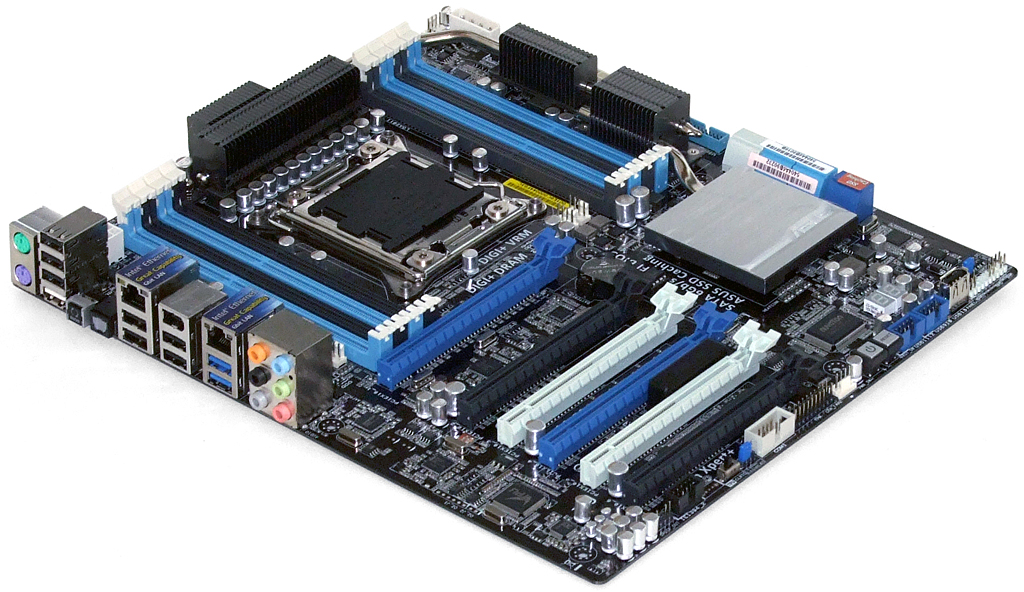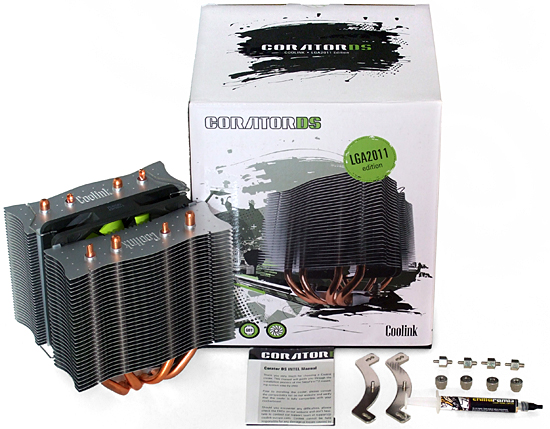The Final Five: Gaming Cases Between $80 And $120, Rounded-Up
Our 15-way shootout of cases priced between $80 and $120 ends as we compare the last five models to the previous ten, yielding an overall winner. Which chassis offers the best balance of quality, cooling, and noise reduction, and which is the best buy?
Test Setup And Benchmarks
| Test System Configuration | |
|---|---|
| CPU | Intel Core i7-3960X (Sandy Bridge-E): 3.30 GHz, Six Cores O/C to 4.25 GHz (34 x 125 MHz) at 1.40 V Core |
| CPU Cooler | Coolink Corator DS 120 mm Tower |
| Motherboard | Asus P9X79 WS: LGA 2011, Intel X79 Express, Firmware 0603 (11-11-2011) O/C at 125 MHz BCLK |
| RAM | G.Skill F3-17600CL9Q-16GBXLD 16 GB (4 x 4 GB) DDR3-2200 Benchmarked at DDR3-1600 CAS 9 defaults |
| Graphics | Nvidia GeForce GTX 580: 772 MHz GPU, GDDR5-4008 Maximum Fan Speed for Thermal Tests, SLI |
| Hard Drives | Samsung 470 Series MZ5PA256HMDR, 256 GB SSD |
| Sound | Integrated HD Audio |
| Network | Integrated Gigabit Networking |
| Power | Seasonic X760 SS-760KM ATX12V v2.3, EPS12V, 80 PLUS Gold |
| Software | |
| OS | Microsoft Windows 7 Ultimate x64 |
| Graphics | Nvidia GeForce 296.10 WHQL |
| Chipset | Intel INF 9.2.3.1020 |
We reused the test platform from our earlier Four ATX Cases For High-Capacity Water Cooling, Reviewed article, but at an overclocked setting more appropriate for air cooling. The test platform includes Asus’ P9X79 WS and a sacrificial C0-stepping Core i7-3960X.
We normally choose a heat sink for its low noise and cooling performance, but Coolink’s Corator DS delivers the moderately low temperatures and moderately high noise results needed to properly evaluate the airflow and noise-dampening capabilities of these cases.
| Benchmark Configuration | |
|---|---|
| Prime95 v25.8 | 64-bit executable, Small FFTs, 11 Threads |
| 3DMark 11 | Version: 1.0.1.0, Extreme Preset: Graphics Test 1, Looped |
| RealTemp 3.40 | Average of maximum core readings at full CPU load |
| Galaxy CM-140 SPL Meter | Tested at 1/2 m, corrected to 1 m (-6 dB), A-Weighting |
Get Tom's Hardware's best news and in-depth reviews, straight to your inbox.
Current page: Test Setup And Benchmarks
Prev Page Building With The Raidmax Seiran Next Page Temperature, Noise, And Acoustic Efficiency-
dudewitbow idroidToms should do a review on high-end cases featuring EXTREME watercooling.Reply
the only tiny problem at the most part i see in that is that it would be slightly harder to test thermal efficiency, since its being cooled by water, rather than air + hsf so in a wc build, the thermal ratings will be extremely close. -
back_by_demand It would be nice to see a left-sided window case listing, there are definate advantages to a left sided window / upside down mobo configReply -
Crashman amuffinThe Antec Solo II is not a case meant for gaming.Well...Antec sent it anyway. Along with the Eleven Hundred. So they evidently had a plan.back_by_demandIt would be nice to see a left-sided window case listing, there are definate advantages to a left sided window / upside down mobo configDid you know that the reason many manufacturers abandoned the upside-down case was because some motherboard heat pipes supposedly didn't work right in that configuration?iknowhowtofixitBut, but, but.... The Phantom 410 is sooooo ugly...Eye of the beholder :)Reply
-
The Solo II would probably have done a little better with your LGA2011 / GTX580 setup, if Antec included at least one front intake fan. Any chance of a re-test with an added intake fan or two? :)Reply
-
antemon I'm a fan of smaller casesReply
I have a qx-2000 case from aerocool. it's a nightmare for cable management and upgrading partsm but I like it
can toms also do an in-depth article on smaller cases?
particularly, I want a similar case as the qx-2000 but the PSU is mounted at the bottom so that adding items inside woundnt be too much of a chore.
thermaltake armor a30 looks awesome, but still has a top mounted PSU


